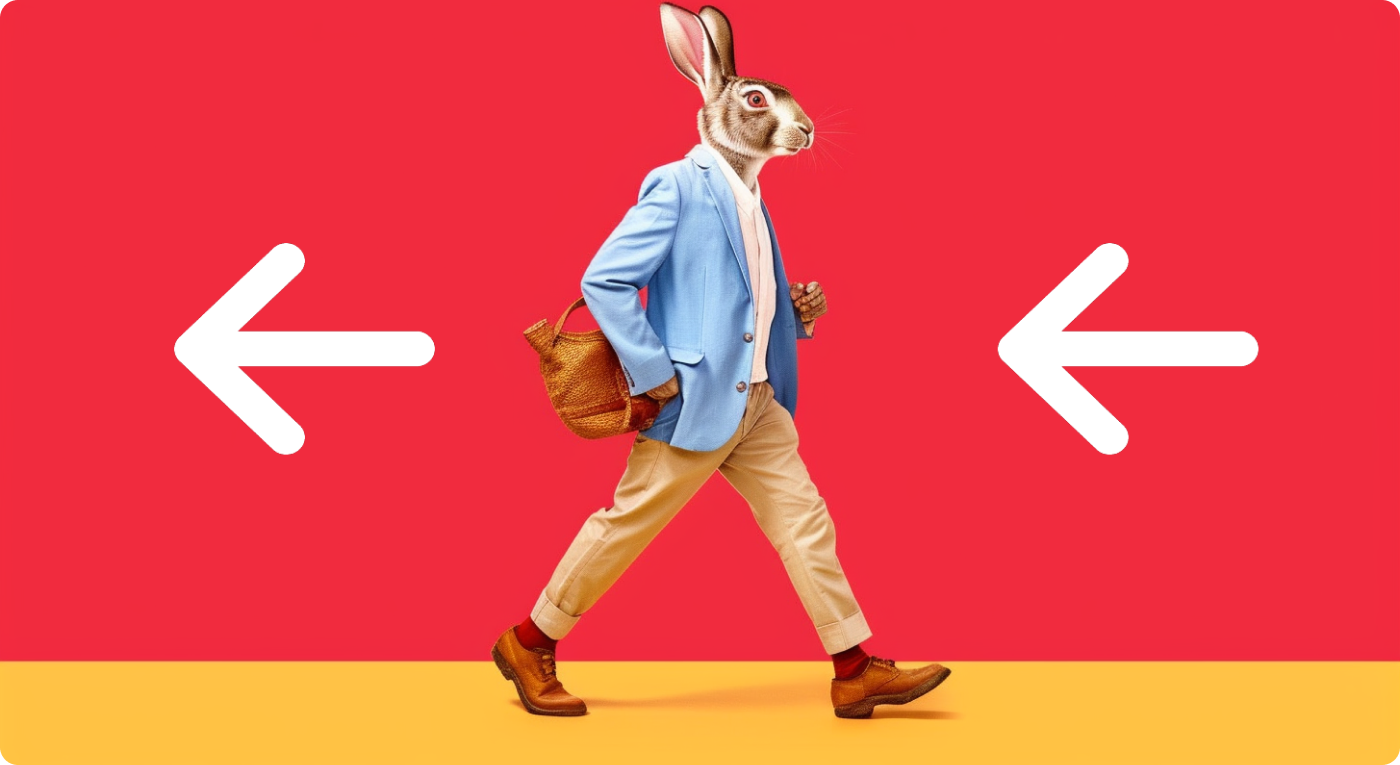Let’s do a mental exercise: Imagine there’s a basketball rolling downhill, okay? – Other approaches like “UX” or “User-centered design” will do whatever it takes to eliminate any obstacles the ball may encounter along its path. In other words, they will help reduce friction in its journey, hoping that it will reach its goal.
However, there are many things these approaches won’t cover. For better or worse, we are watching a movie that has already started because we are paying attention to an effect: “The ball is coming, let’s do something about it.” But why is the ball coming? Is this its best destination? And most importantly, if we know there is something better for it, should we allow it to reach a destination that is not so beneficial What a dilemma!
The problem, precisely, is that these methodologies try not to interfere with the ball. Behavioral Design, on the other hand, goes in the opposite direction, knowing that not only is it impossible not to influence, but it is absolutely necessary!
Let’s talk about influence. A key starting point is that, whether we like it or not, as designers/creators of products and services, we will influence the outcomes in one way or another because, as Thaler and Sunstein claim in “Nudge,” we are choice architects. When we remove or add an obstacle to prevent the ball from falling into a hole, for example, we are influencing the outcome. Knowing this as a fact, we need to go further back and not just focus on removing barriers.
About our way of thinking. We could state that most of us act in our own self-interest. We love ourselves and want what’s best for us, right? However, ask yourself this question honestly: ‘Do I always make the best decisions for my own well-being?’ The answer is probably a resounding ‘No,’ and in many cases, that ‘No’ is extensive and has complex implications.
Well, behavioral sciences (born from behavioral economics) are here to show us exactly that: we don’t always make the best decisions, not because we’re incapable but because it’s VERY difficult to escape our cognitive biases. Due to cognitive biases, humans will make predictable errors. That’s why we need to help people (including ourselves) make better decisions, like starting a new healthy habit, sticking to medical treatment, or giving up a harmful habit. But of course, that’s easier said than done! 😅
Where do we start? In a nutshell: forget about the ‘features.’ When designing a product, whether physical, digital, or a service, we shouldn’t focus on designing a ‘feature.’ That’s the mistake most entrepreneurs and product teams make. The reality is that an ‘awesome feature‘ won’t guarantee the success of your product; asking that one thing to compensate for everything else is too much to ask and represents a significant risk.
So, what should we focus on? – One word: ‘value’. Offer value, no matter how small, to all the actors involved. That should become your motto. Here’s a brief post about that.
Now, here’s a practical mapping of what we really need to do:
Design situations > to > Create behaviors > to > Deliver value.
Let’s start with the situation. For a behavior to occur, we need to design a balance (a situation) between three main types of barriers: motivation barriers, ability barriers, and trigger barriers. Here’s a brief blog post about that.
You see, for a behavior to occur (let’s say we need people to follow a specific morning routine and then answer some questions about how it went), we’ll need:
- Find an optimal point where their motivation is sufficient (the effort must be worth it).
- Users must be capable of actually performing that routine. If it’s too difficult, too costly, or somehow inaccessible to them, the behavior won’t happen.
- We need clear and timely triggers they can react to.
As behavioral designers, our task is to create strategies that strike the right balance between these barriers, an ‘ideal situation,’ that allows the desired behavior to occur (quit smoking, wake up early, etc.). If the behavior is carried out, the user will gain some value in return and will want to continue participating because it’s feasible and valuable.
Conclusion. Behavioral Design is a much more comprehensive product design approach that, unlike other disciplines, does not remain on the surface. It delves into, identifies, and acts upon specific psychological factors, designing for them without leaving loose ends. Every action, perception, and reaction will be mapped so that all parties involved benefit from the product/service and want to be part of it. Nothing is left to chance or a simple ‘let’s make things easier for users and then cross our fingers.‘ That’s no longer enough. Nowadays, it’s necessary to move forward and learn to master these tools.








